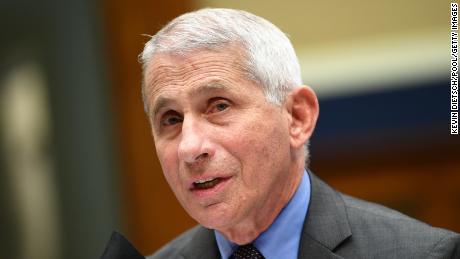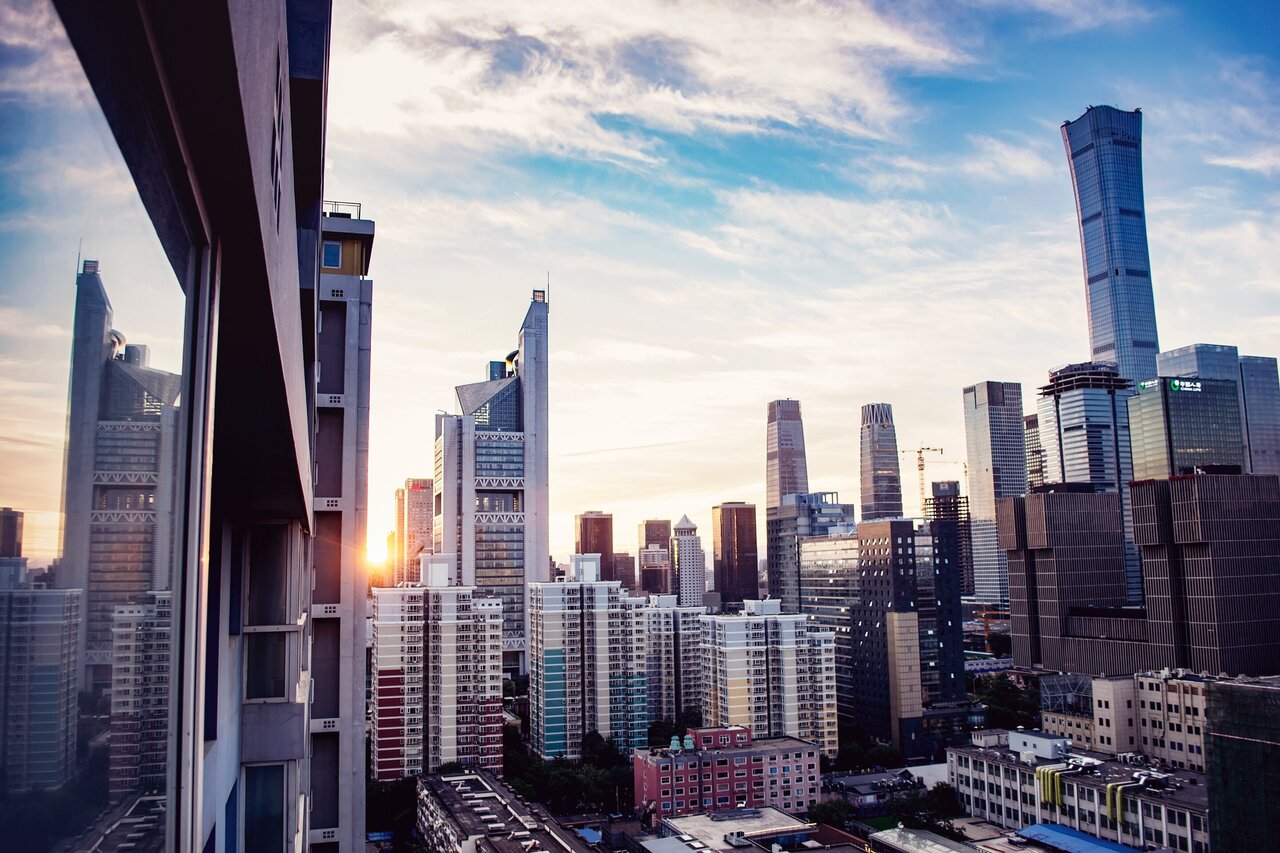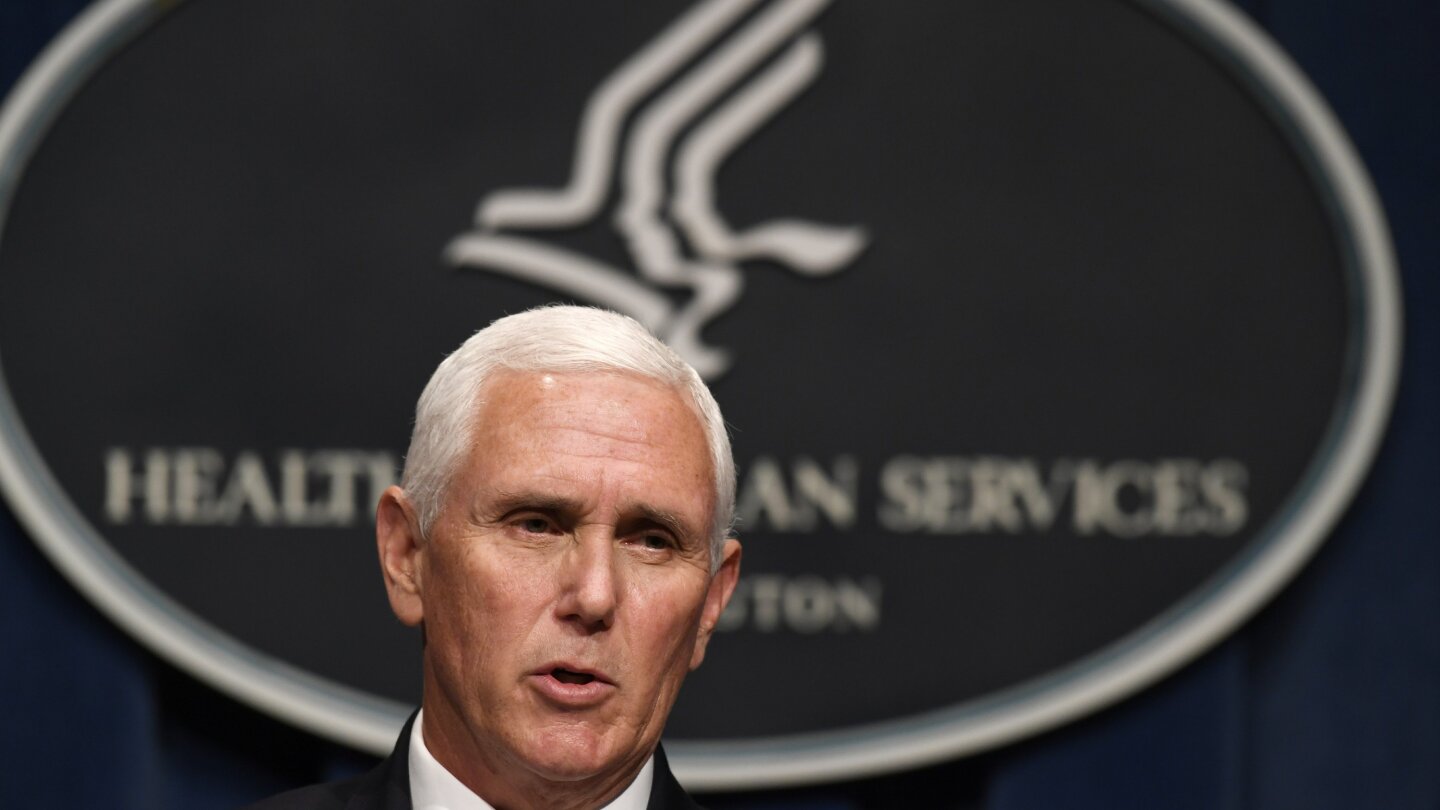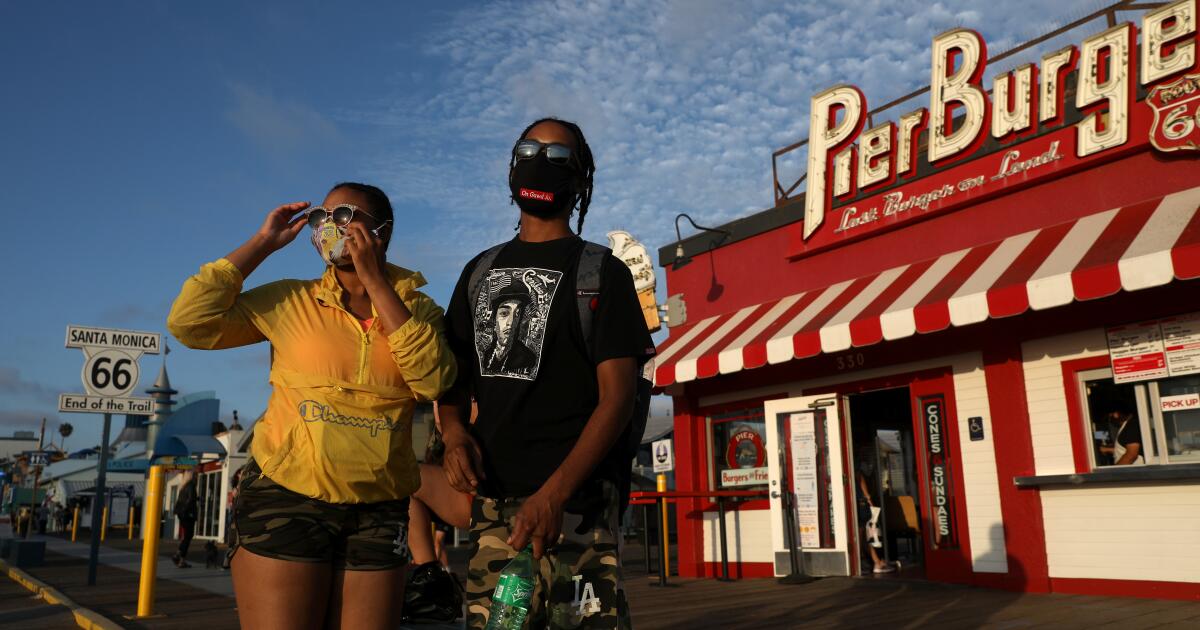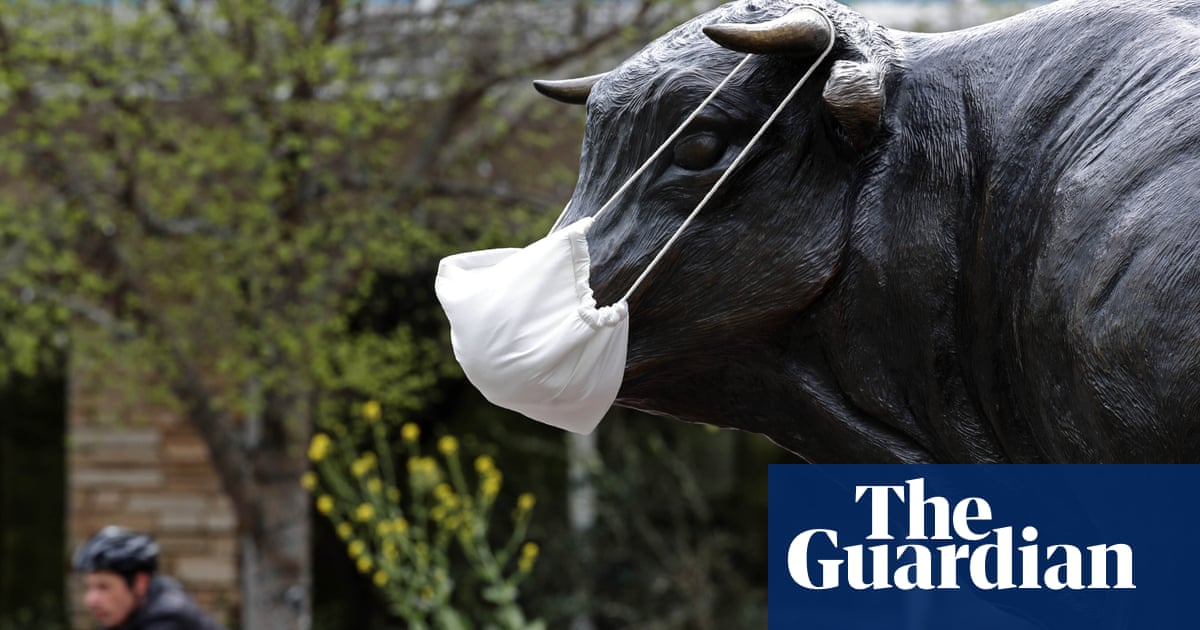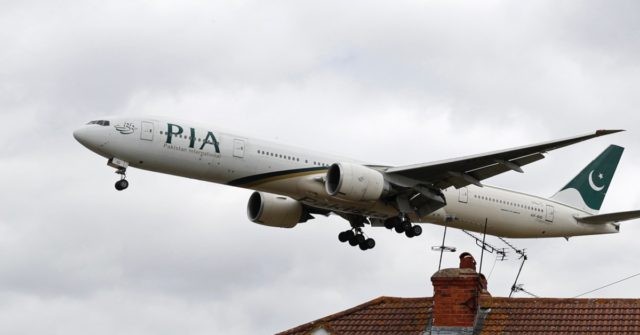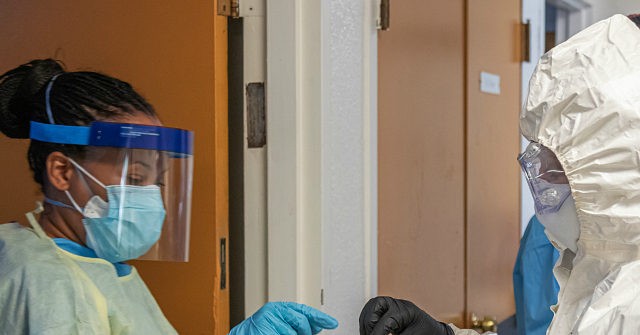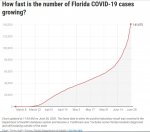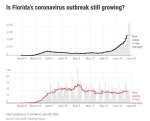This next article is Trump bashing, I realize that, but you have to realize that a lot of voters agree with it and he has got to reverse course and start acting presidential about this virus if he wants to win back those voters. We need Trump to win in November, he needs all the help he can get, and I hope he is reading articles like these and taking it to heart so he can make some changes that will bring these voters back.
(fair use applies)
With Trump leading the way, America’s coronavirus failures exposed by record surge in new infections
Toluse Olorunnipa, Josh Dawsey, Yasmeen Abutaleb
1 day ago
Five months after the novel coronavirus was first detected in the United States, a record surge in new cases is the clearest sign yet of the country’s historic failure to control the virus — exposing a crisis in governance extending from the Oval Office to state capitals to city councils.
President Trump — who has repeatedly downplayed the virus, sidelined experts and misled Americans about its dangers and potential cures — now finds his presidency wracked by an inability to shepherd the country through its worst public health calamity in a century. The dysfunction that has long characterized Trump’s White House has been particularly ill-suited for a viral outbreak that requires precision, focus and steady leadership, according to public health experts, administration officials and lawmakers from both parties.
As case numbers began rising again, Trump has held rallies defying public health guidelines, mused about slowing down testing for the virus, criticized people wearing masks and embraced the racially offensive “kung flu” nickname for a disease that has killed at least 123,000 Americans.
A similarly garbled message for the country has also been put forward by the president’s top aides and other senior administration officials, who contradict one another on a daily basis. On Friday, Vice President Pence used the first White House coronavirus task force briefing in almost two months to praise Trump’s handling of the virus and cast aside concerns about a record spike in new infections.
“We have made a truly remarkable progress in moving our nation forward,” Pence said, a few minutes after announcing that more than 2.5 million Americans had contracted the coronavirus. “We’ve all seen the encouraging news as we open up America again.”
Later Friday, the United States recorded more than 40,000 new coronavirus cases — its largest one-day total.
It was the latest example of whiplash from the Trump administration, which has struggled to put forward a consistent message about the pandemic. While public health experts urge caution and preventive measures such as mask-wearing and social distancing, Trump, Pence and other top aides repeatedly flout their advice, leaving confused Americans struggling to determine who to believe.
“They’re creating a cognitive dissonance in the country,” one former senior administration official said. “It’s more than them being asleep at the wheel. They’re confusing people at this point when we need to be united.”
This portrait of a nation in crisis — and its failure to contain an epic pandemic — is based on interviews with 47 administration officials, lawmakers at the national and state level, congressional staff, federal and local health officials, public health experts and other current and former officials involved in the bungled and confused response.
America’s position as the world’s leader in coronavirus cases and deaths is in large part the result of human error, and the still-rising caseload stands as a stark reminder of the blunders that have characterized the national response. Trump’s actions, and his position in the Oval Office, make him a central figure in any assessment of the country’s handling of the outbreak.
As the White House task force scaled back its meetings and stopped its public briefings in May and June, Trump seized the national spotlight and used it to shift the country’s focus from the virus to an economic comeback he branded the “TRANSITION TO GREATNESS.”
Trump’s public mentions of the coronavirus declined by two-thirds between April and early June. When he did discuss the pandemic, it was often to float misinformation about treatments, masks and testing — science-defying views that have been embraced by his supporters and top Republican lawmakers.
The White House has blocked Anthony S. Fauci, the nation’s top infectious-disease expert and director of the National Institute of Allergy and Infectious Diseases, from some appearances that he has requested to do in recent weeks, according to two people familiar with the matter. White House aides have argued that television interviewers often try to goad Fauci into criticizing the president or the administration’s approach, and that Fauci is not always good about “staying on message,” in the words of a senior administration official. Aides did allow Fauci to appear on CNN recently for a town hall, the official said.
White House officials have battled for weeks over whether to hold the public coronavirus briefing, with some arguing to instead focus on other issues, such as the economy.
As local officials struggled to enforce stay-at-home orders and other restrictions, the virus continued to circulate throughout a country riven by partisan politics and devoid of a national public health strategy, said Max Skidmore, a political scientist at the University of Missouri at Kansas City and author of a book on presidential leadership during health crises.
“We’re the only country in the world that has politicized the approach to a pandemic,” he said.
Now, covid-19, the disease caused by the coronavirus, is advancing at an accelerated pace in the United States, even as other countries reopen their economies after getting their outbreaks under control. European diplomats are poised to approve an agreement that will reopen the European Union to travel from many countries but not American tourists, because the coronavirus is still raging in the United States.
In contrast, states from Arizona to Florida are pausing or reversing their attempts to reopen their economies.
The new peak in cases — coming so quickly after the first and with just months to go before a presidential election and an impending flu season — has alarmed public health experts and the president’s political allies.
“These epidemics are going to be hard to get under control,” said Scott Gottlieb, the former commissioner of the Food and Drug Administration and an informal adviser to the Trump administration. He said he expects deaths to soon climb to more than 1,000 per day again. “It’s going to continue to spread until you do something to intervene. I’m not sure we are taking enough forceful action to break the trend right now.”
The president has dramatically scaled back the number of coronavirus meetings on his schedule in recent weeks, instead holding long meetings on polling and endorsements, his reelection campaign, the planned Republican National Convention in Jacksonville, Fla., the economy and other topics, according to two advisers, who, like others, spoke on the condition of anonymity to discuss internal deliberations.
While Pence continues to convene weekly calls with governors to discuss coronavirus testing, supplies and other issues, Trump no longer participates, the advisers said. Trump now receives his updates on the coronavirus effort from Pence, officials said.
Trump’s intense focus on his campaign comes as he has been sliding in public polling and trailing Democratic rival Joe Biden, who is winning support from voters who disapprove of the president’s handling of the pandemic and the accompanying economic recession. Some Republican officials have tried to advise the president to focus more intently on managing the public health crisis at hand, arguing that doing so would help his political standing — and theirs — while also speeding along the economic recovery.
But Trump has shown little indication that he plans to re-engage on shepherding a national coronavirus response in the wake of surging cases. He has expressed frustration to aides that he was criticized for a lack of adequate testing and is now not being given enough credit for the 500,000 daily tests that are currently being conducted, officials said. Trump has repeatedly claimed that the caseload is only going up because of the increasing number of tests, and he has openly discussed reducing testing.
“The number of ChinaVirus cases goes up, because of GREAT TESTING, while the number of deaths (mortality rate), goes way down,” Trump wrote Thursday on Twitter.
In several states, where hospitalizations and positivity rates are sharply increasing, Trump’s words offer little comfort to governors trying to figure out how to respond to a burgeoning crisis.
Some states are still struggling to procure testing kits and supplies for the kits, including swabs, and have pleaded for the federal government to play a larger role in coordinating purchases, resolving supply shortages and distributing the tests. Doctors and health-care facilities are still grappling with shortages of personal protective equipment (PPE), including private doctors’ offices that cannot perform routine procedures safely because they do not have the necessary equipment, according to the American Medical Association.
“It is not clear to us how the administration has distributed PPE across the country during the pandemic, but having a single national coordinated strategy would help ensure that states, hospitals, physician offices and other facilities have a single, centralized authority to work through to acquire essential PPE,” said American Medical Association President Susan R. Bailey.
Politicization of the pandemic has left many Republican governors to choose between staying a doomed public health course while touting economic recovery or acting on recommendations from public health experts who Trump has dismissed.
In Florida, Gov. Ron DeSantis (R) has resisted calls for a statewide mask mandate, even as Florida’s cases jumped by 62 percent from its previous high of 5,511 on Wednesday to a new high of 8,942 on Friday. His argument, made publicly as recently as Thursday, is that not all parts of the state are experiencing the same level of outbreak, and therefore they should not be subject to a one-size-fits-all approach. The state announced Friday that all bars must shut down on-site consumption, three weeks after they reopened.
In Arizona, public health experts and local officials largely credit lobbying efforts by mayors for pushing Gov. Doug Ducey (R) to reverse his position and allow cities to implement mask requirements as they saw fit.
Kristen Pogreba-Brown, an epidemiologist at the University of Arizona, said she found it “disgusting” to watch politics penetrate considerations about public health precautions. She pointed in particular to issues of testing following the president’s erroneous suggestion that increased testing is to blame for the scope of the outbreak.
“The fact that we don’t have a federal testing program is pretty embarrassing, frankly,” she said, noting that her university is developing its own in-house testing system, because “we don’t have faith people can go out and get tested in the community.”
More than five months after the first test for the coronavirus was conducted in the United States, testing equipment is still being doled out based on which states manage to get federal officials on the phone to press their case. After a recent weekend that saw demand for testing outstrip capacity, the governor’s office in Arizona placed a call to the White House and the Centers for Disease Control and Prevention, said Daniel Ruiz, Ducey’s chief operating officer. Within 24 hours, they had secured expedited access to a rapid Roche testing machine, he said.
Some states are banding together to issue quarantine orders against visitors from regions with rising cases, further highlighting the lack of a federal standard. Conspiracy theories about masks, vaccines and social distancing have abounded, threatening to stymie local leaders’ attempts to enforce public health guidelines.
Trump’s willingness to ignore ordinances on masks and large crowds has added to the sense of confusion, public health experts said.
“Any time there is politicization of an infectious-disease response, it makes it much harder to intervene,” said Amesh Adalja, an infectious-disease expert at the Johns Hopkins Center for Health Security. People are “less likely to actually listen to public health authorities on what are the best actions to take and how to take them because they think that everything has been politicized in that there is no truth — it’s truth from Democrats or Republicans, rather than the truth,” Adalja said.
The White House has played a central role in undermining the kind of clear and consistent messaging experts say is necessary to mount a successful public health response to a viral outbreak, current and former administration officials said.
Top aides to Pence, including his chief of staff, Marc Short, have grown increasingly skeptical of public health officials within the administration, believing they have been wrong too many times about mitigation techniques and transmission of the virus, according to three officials familiar with the matter. Short has increasingly disagreed with public health experts in coronavirus meetings, these people said.
Trump has undermined Fauci and other health experts repeatedly, publicly dismissing their views about reopening schools, professional sports and other aspects of public life.
While Fauci has been sidelined from briefing Trump and appearing on television, economic advisers such as trade adviser Peter Navarro and Larry Kudlow, director of the National Economic Council, have been given a more prominent public role. They have often used the platform to provide false assurances that the recent surges are under control.
“We’re going to have hot spots. No question. We have it now,” Kudlow said Thursday. “And, you know, Texas and parts of the South, the Carolinas, Arizona. We just have to live with that.”
Others without a background in public health, including Trump’s son-in-law, Jared Kushner, have played an outsized role in guiding the federal response. Just last month, Kushner told others involved in the response that the virus was essentially under control and that there would be no second wave, a former administration official said.
White House officials, including Kushner, Deborah Birx, coordinator of the administration’s coronavirus response, and acting chief of staff Mark Meadows met Thursday to discuss what the administration should be doing to contend with the spike in cases, a White House official said. The plan is for Birx to visit the hardest-hit states to collect more information, and for officials to redirect the therapeutic drug remdesivir to states that are surging.
The official said that Birx and Fauci are also likely to do more regional TV interviews in places where cases are surging.
The White House is also expected to record public service announcements in Spanish about the coronavirus in an attempt to reach the Hispanic community, which has been hit particularly hard by the virus. A senior White House official said top administration officials have regularly offered assistance to officials in Texas, Florida, Arizona and other states. Two administration officials said there will probably be more briefings for reporters, though many are likely to be off-camera.
The partisanship that has come to surround mask-wearing was on stark display on Capitol Hill on Friday, as House Majority Whip James E. Clyburn (D-S.C.) convened a hearing of the select subcommittee on the coronavirus crisis.
Clyburn and the other committee Democrats attended wearing masks, while the committee’s Republican members were maskless, which led to angry exchanges.
Rep. Jamie B. Raskin (D-Md.) accused Republican members who were maskless of provoking “terror and fear in your colleagues and perhaps your staff.”
Republicans, several of whom had worn masks into the hearing room before taking them off, contended that they could practice social distancing safely while seated maskless at the dais.
“We are six feet apart. We don’t need a mask,” said Rep. Mark Green (R-Tenn.), who is a physician.
Publicly, GOP lawmakers remain largely supportive of Trump’s handling of the pandemic, declining to put any blame on him or the federal response for the upward trend in infections. They generally say the decision-making responsibility now lies with state governments, and that individual citizens bear the onus for responsible behavior to hold down infections.
The CDC is sending teams to states experiencing outbreaks, rather than following the usual policy of waiting for states to ask for help. The agency has sent nearly 150 people out to about 20 states, a federal official said, including California, Arizona, Texas and Florida. It has about three dozen more staffers awaiting deployment to hot spots to provide technical assistance, epidemiological support, surveillance and contact tracing, the official said.
While Trump has attacked some Democratic governors for their handling of the virus, its recent spread in Republican-led states such as Texas, Florida, Arizona, South Carolina and Oklahoma has complicated the politics around the president’s response.
Officials in some states that have contained much of the virus’s spread have called on Republican leaders in other states to take drastic measures to get control of the disease.
“As painful as it is, you’ve got to overdo it in terms of the aggressiveness in which you shut things down,” New Jersey Gov. Phil Murphy (D) said in an interview.
While several Republican governors resisted shutdown efforts during the spring, some have begun to warn their residents that they are hardly immune.
Thomas Dobbs, Mississippi’s top health officer, told residents recently to be prepared for a lack of a hospital bed if they crash their cars or a lack of ventilators if they suffer a heart attack.
“If we’re not careful,” he said, “Mississippi will look like New York.”
.

